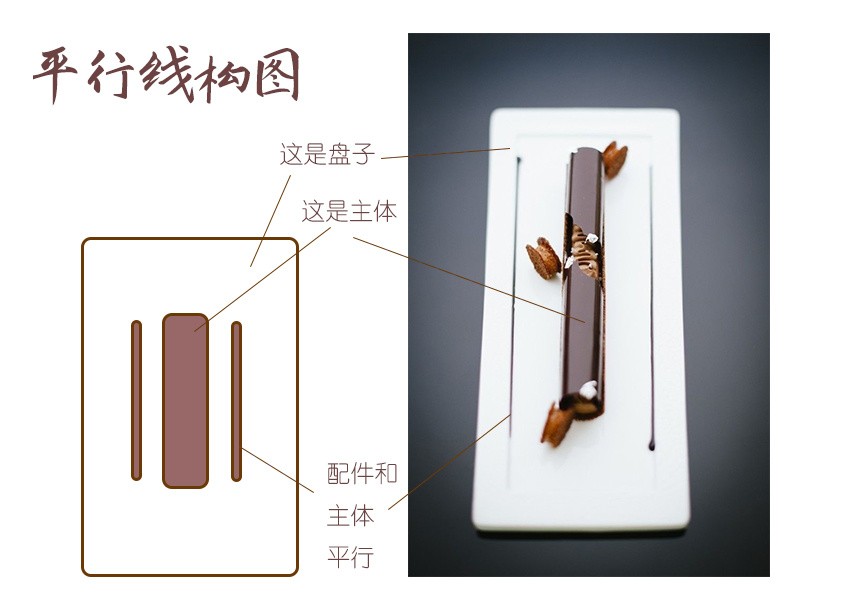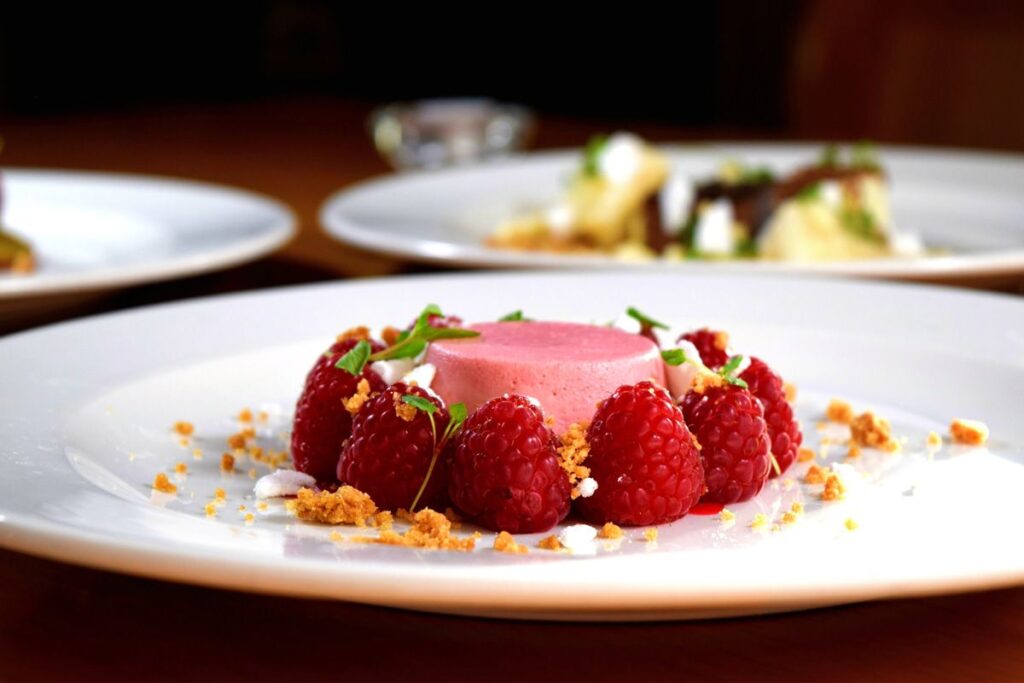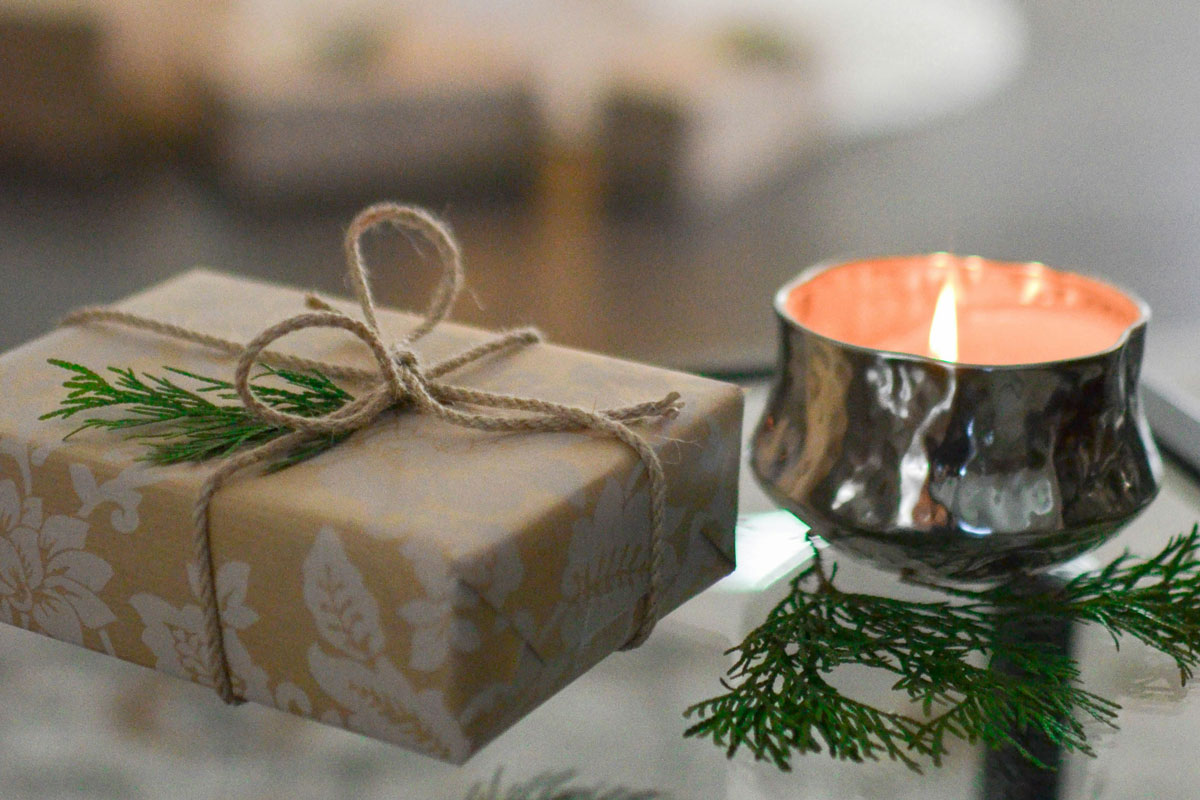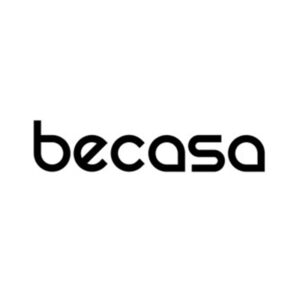The most academic term for “dessert plating” is “after-dinner dessert presentation”. It is the chef’s expression of the dessert, both in terms of the selection of the plating materials and the construction of the various components. Therefore, this kind of dessert should be enjoyed on the spot, which is the greatest respect to the chef. Instead of packing everything in a packing box to take away.
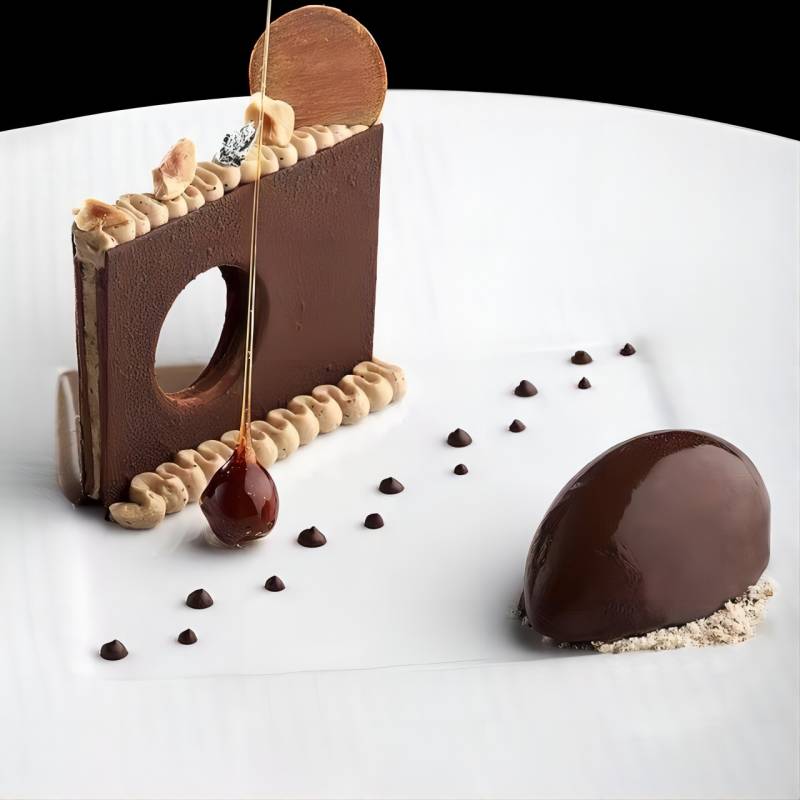
What are the components of dessert plating?
Generally speaking, dessert plating consists of the main body, sauce, crunchy ingredients, decoration, and serving ware together, which are five parts in total. Too many or too few will affect the artistry of plating.
1. The main body
The main body can also be described as the dessert itself. It usually takes longer to prepare than the other components and contains elements of taste, texture, design, etc. Remember, the main body should not be confused with the accessories, for example, a sponge cake should never be submerged in a pile of accessories. In this way, you will not be able to distinguish who is the main character of the dessert.
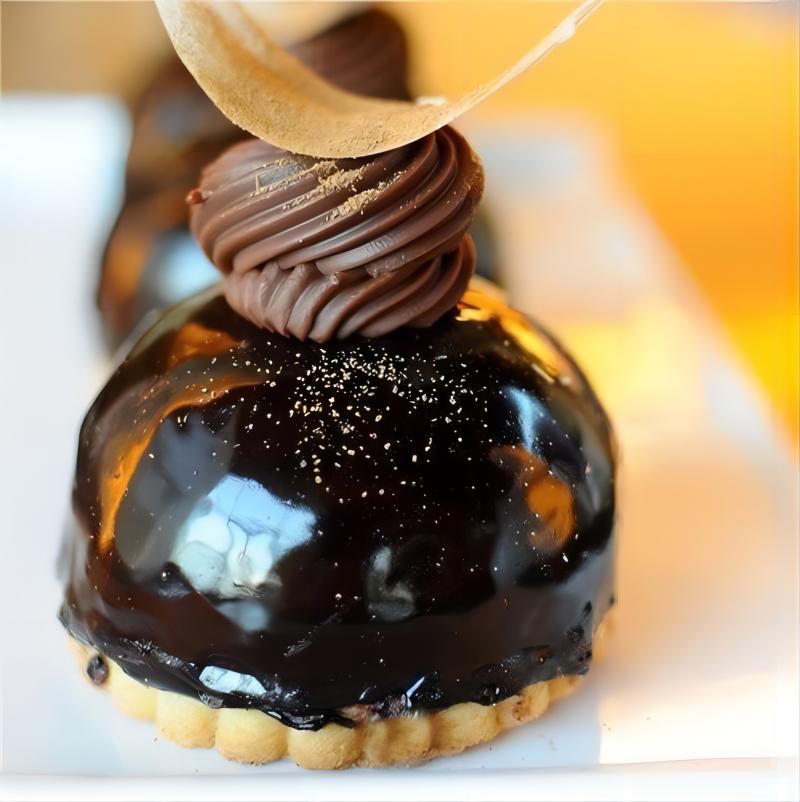
2. Sauces
The sauce is actually a very complex category, a combination of flavors, colors, and textures. Just the right amount of good sauce not only further enhances the taste of the dish, but also showcases it better. In today’s age of Z, everyone is a visual animal.
If this dessert needs to wait until serving to be drizzled with sauce, it can also be served in a delicate saucer and then plated.

3. The crunchy part
The garnish for this part is usually some dry cookies. This decoration is especially important for soft desserts. As an example, an egg cone ice cream, soft and hard, has a contrasting texture. Many girls usually choose the cone style over the cup ice cream. Besides looking good, it will actually taste better! The layers are more distinct!
Tuille cookies are the most common cookies used for plating. It is characterized by thinness, sweetness, and crispness. Moreover, you can shape it in various shapes while it is still warm and pliable.
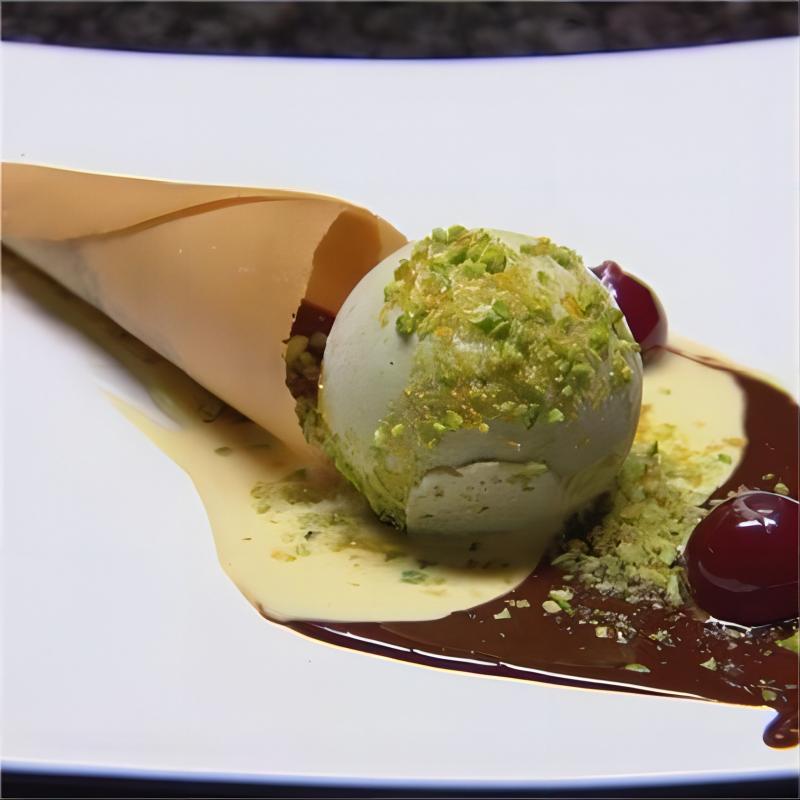
4. Garnish
The garnish is the finishing touch to every dessert. A good garnish can add color to a dessert. Decorations can be very extensive, such as mint leaves, powdered sugar, gold leaf, chocolate rolls, fruits, sugar products, and smoothies. But please keep in mind that the choice of decorations should not be too messy and numerous and should not steal the thunder of the main dessert.
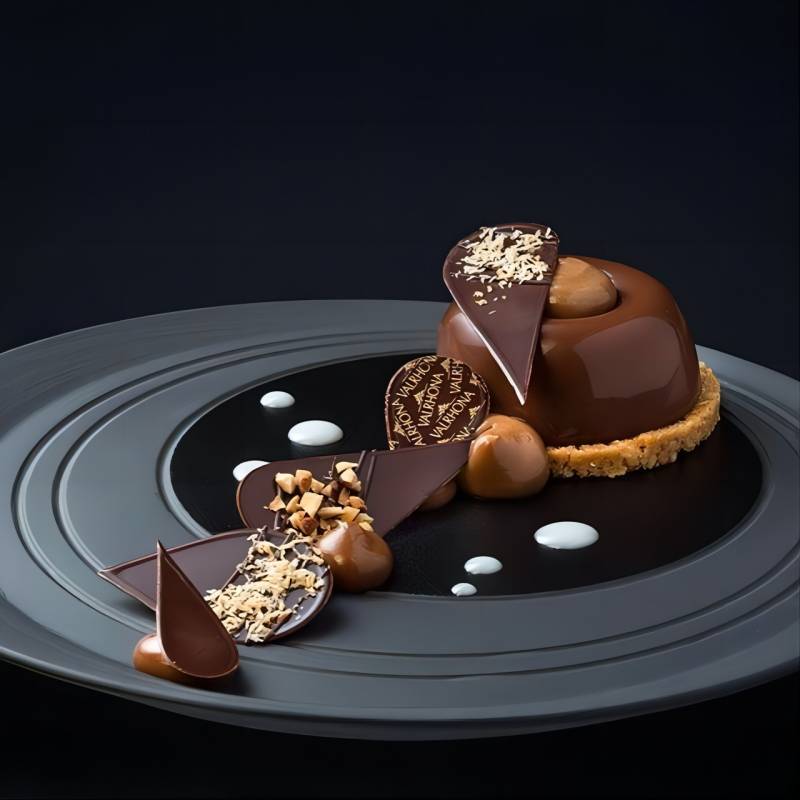
5. Serving ware
Dessert chefs usually choose to use solid color plates. This makes it easier to shape the dessert on the plate in an unconventional way. Some desserts with warm colors can also be placed inside a vintage patterned plate for an extra touch of elegance.
Of course, if you have more budget, you can also choose a dessert plate specifically for desserts. Generally, dessert plates are best made of porcelain or stoneware.
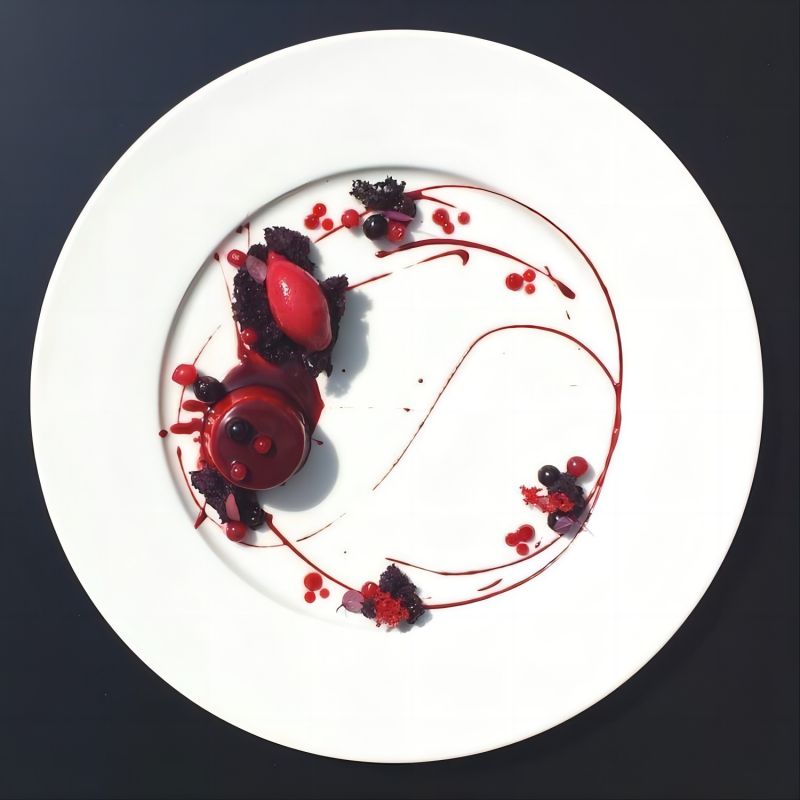
How many dessert plating techniques are there?
There are 12 dessert plating techniques.
Overall composition
The dessert itself can be used as a background. This plating design is generally used for a whole cake or tart pie type of dessert.
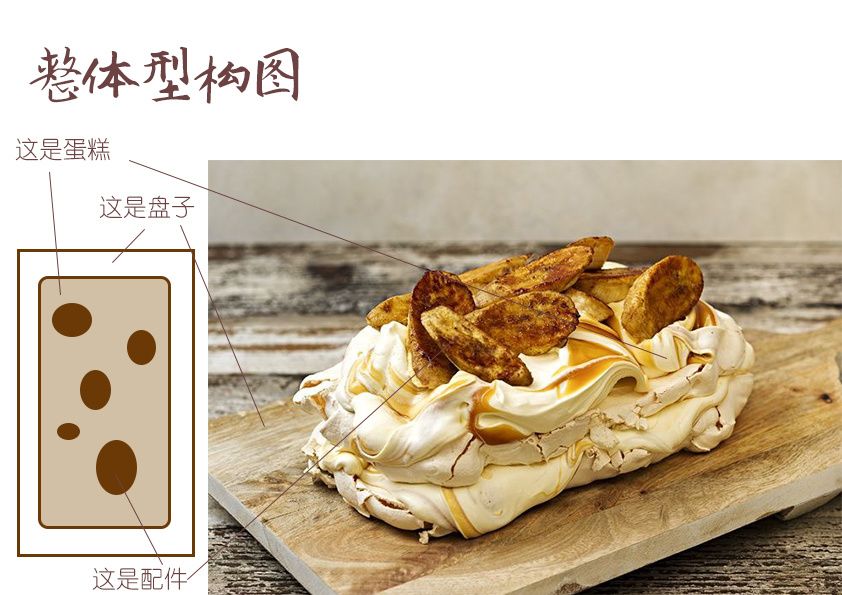
C-shaped composition
You can place the body and other accessories into a C-shape. Such a design will make the static dessert dynamic and more appetizing.

Central composition
This design pose will make people’s visual focus on the central subject. And the impact of the image is stronger.
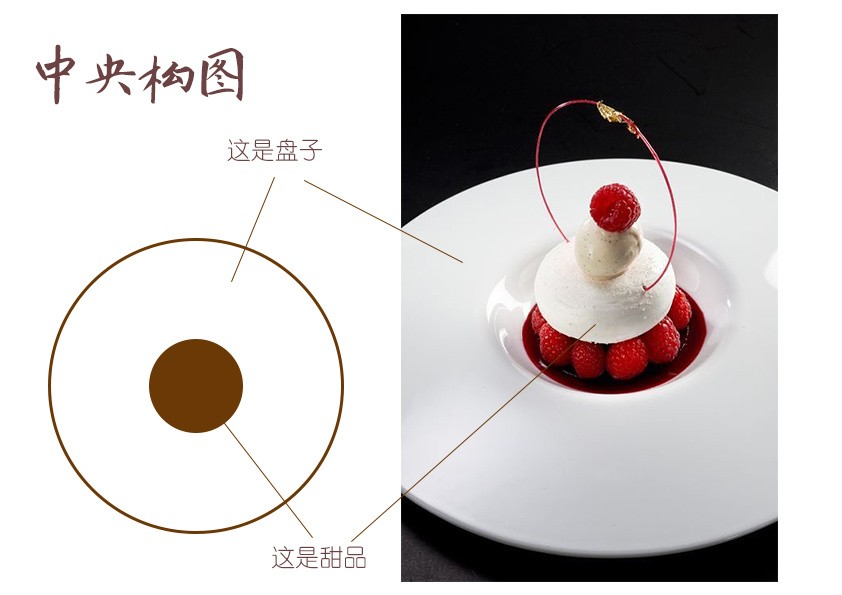
Diagonal composition
More lively plating designs and placing the desserts diagonally could make people feel happy. Also, you can try this design to match THE BECASA‘s square dessert plate.
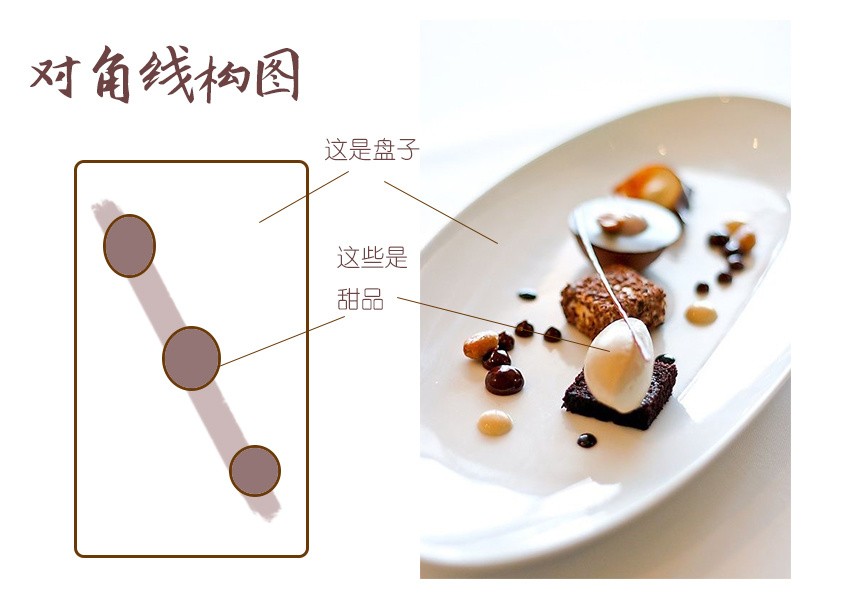
Straight line composition
This is one of the common plating techniques for desserts. The dessert and various accessories are arranged straightly in the center line, dividing the plate into two flatly. The two sides of the perimeter are left white, so the design will make the whole dessert look simple and atmospheric.

Checkerboard composition
The seemingly random arrangement of all the elements on the plate has the feel of a chess game.

Radioactive composition
This kind of plating design has the main body as the core and the accessories are spread around. Its most obvious feature is that the sauce appears radioactive. In addition to quickly focusing the diner’s attention on the main body, it also makes the whole dessert look more spacious.

Three-part composition
You can divide the whole picture design into three equal parts, or a 1:2 design. Such a picture ratio can focus on the dessert subject.
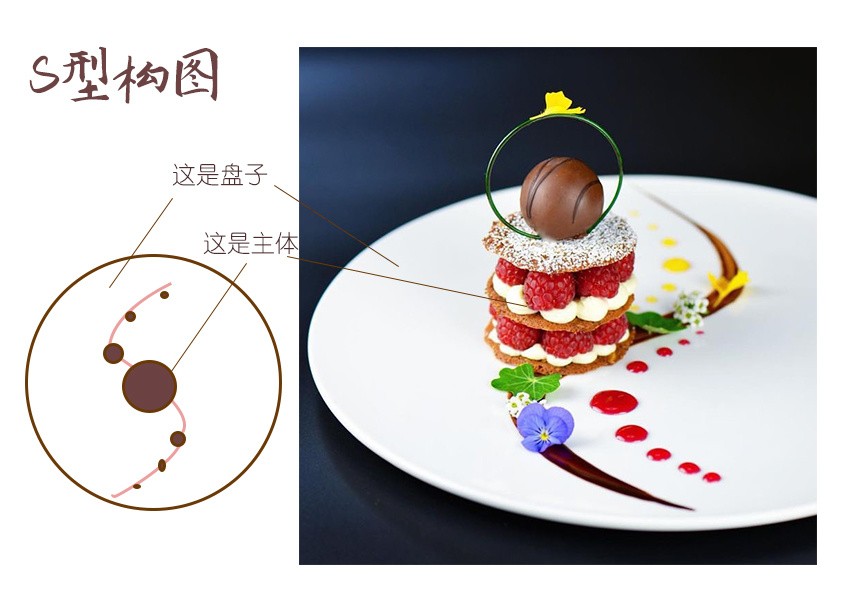
S-shaped composition
In our understanding, curves will feel more emotional and soft than straight-line designs. Such an S-shaped plate design can make the dessert shape more diversified.
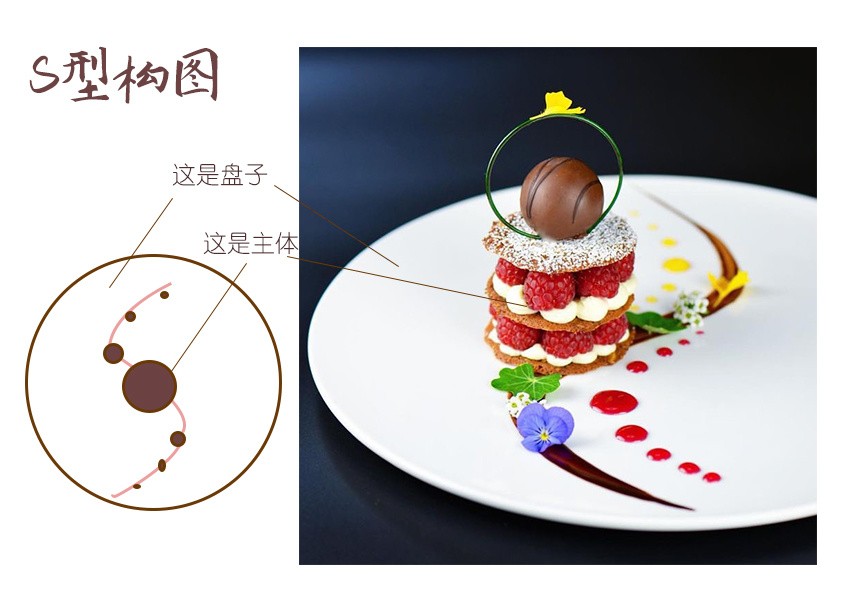
Vanishing point composition
From something to nothing, this plating design has a strong sense of space. It is like putting the stars and the sea into the plate. If you want to adopt this design, learn to arrange the various elements from large to small to direct one’s eyes to the vanishing point.

Vertical composition
Stack desserts upwards or insert crunchy decorative cookies directly into the dessert vertically. This kind of plate design is very spacious and layered. If you are a loyal user of ins, you can use the lowest possible parallel angle to shoot this dessert, the effect will be more impactful!
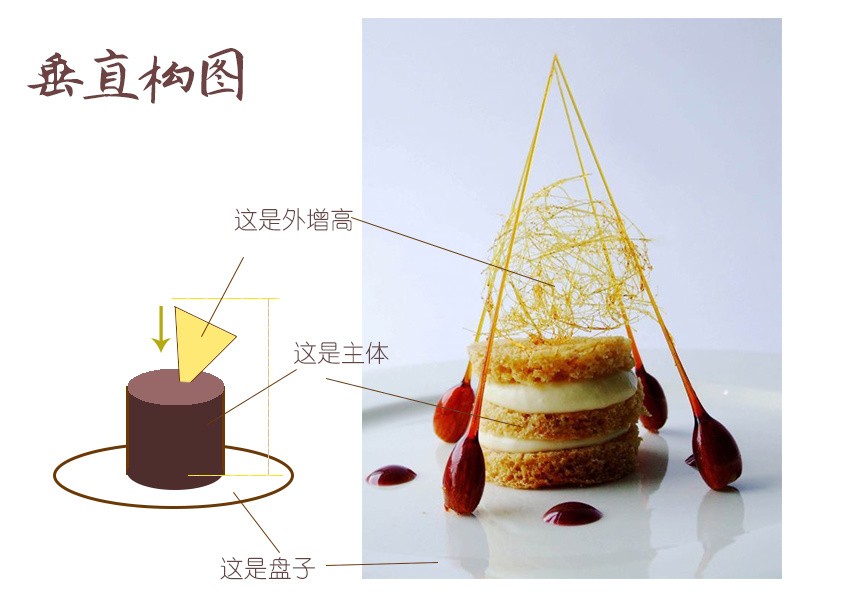
Parallel line composition
A neat and straight plating design usually better reflects the dessert chef’s meticulousness and gives a strong sense of direction.
